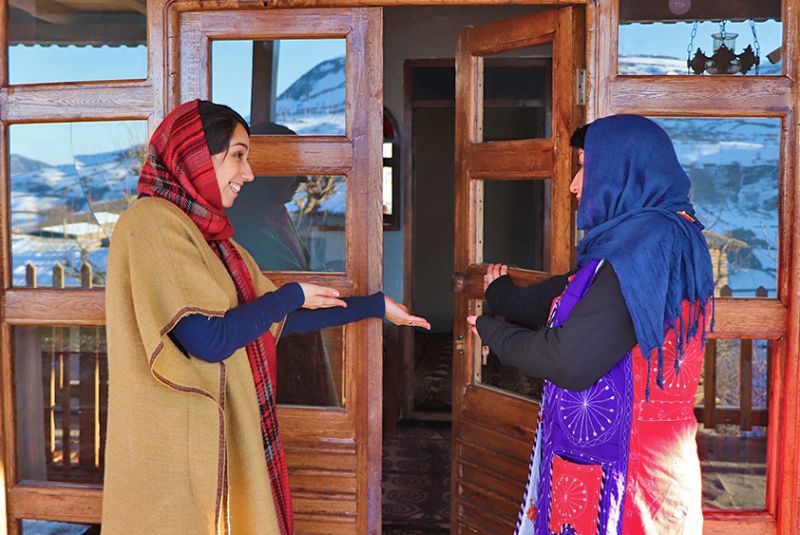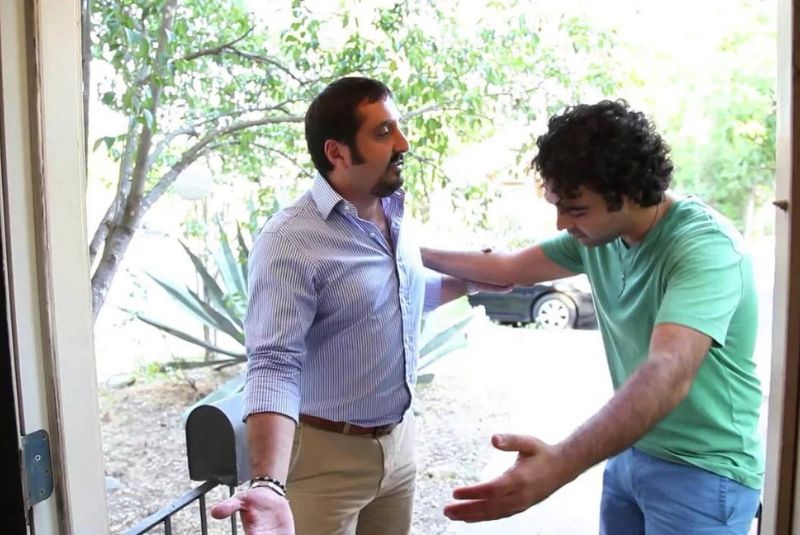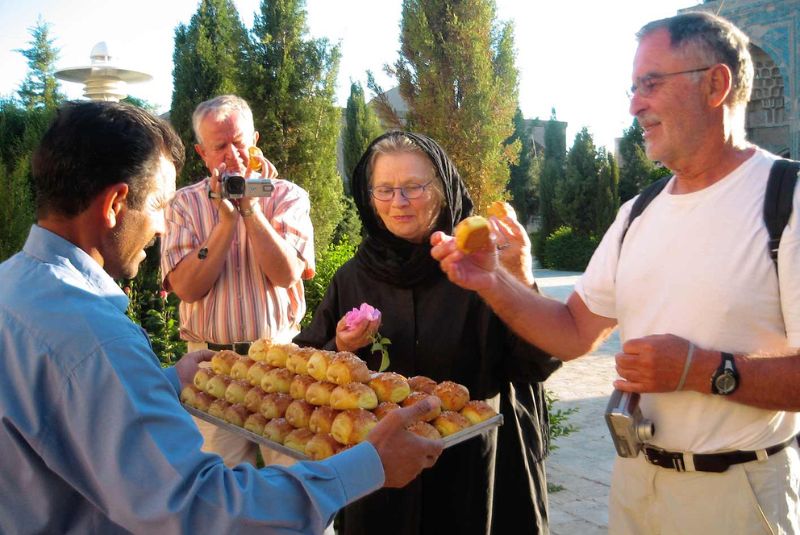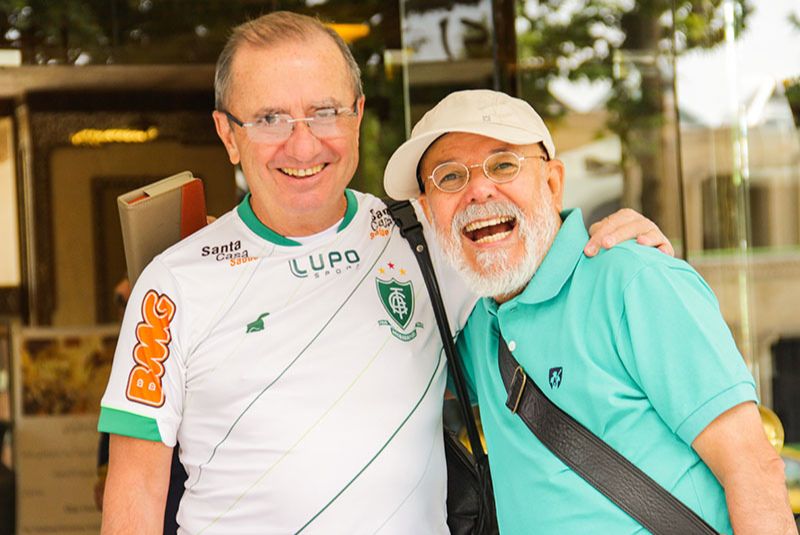Taarof: The Traditional Iranian Practice of Politeness
Have you ever taken a taxi and the driver refused payment? Or perhaps you've been a guest at a Persian family meal, only to find your plate magically refilled without asking?
This cultural behavior is known as Taarof or Ta’arof. While aspects of Taarof may be found in other cultures, in Iran, it is a daily practice and deeply woven into social interactions.
Taarof is derived from the Arabic word for 'mutual recognition,' which signifies more than just politeness. In Farsi, it encompasses compliments, ceremonies, offers, gifts, and formalities. It dictates that one should offer more than is necessary and politely refuse when offered something, often requiring several rounds of insistence before accepting.
This intricate social ritual can be both charming and perplexing to outsiders. However, it is evident in all aspects of Iranian life, from casual encounters to formal negotiations. It reflects the importance of respect, humility, and social harmony.
Whether you're buying groceries or engaging in a business deal, understanding Taarof is essential for navigating Iranian society. Join us to learn everything you need to know about Iranian politeness before traveling to Iran.
What Is Taarof?

Taarof is a traditional Persian practice of politeness and social etiquette, where people say or do things out of respect that they may not genuinely mean. This cultural custom can be seen in various social interactions, from dining experiences to financial transactions. For example, if a waiter in Iran offers to cover your bill, it's not a romantic gesture but a sign of courtesy.
At its core, Taarof involves a series of polite refusals and persistent offers. It is especially common in hospitality settings, where guests might initially refuse food or drink multiple times before accepting. This back-and-forth continues until the host insists, showing their generosity and respect.
In other situations, like paying a taxi driver, Taarof also plays a role. The driver might refuse payment at first, saying “Ghabeleh shoma ra nadaureh” (for you, it’s free), but they do expect you to insist on paying.
The Origins of Taarof
Taarof is a key element of Iranian culture, and plays a significant role in daily interactions such as phone calls, greetings, and chance meetings. It embodies politeness, though it can sometimes appear excessive or insincere. The roots of taarof are believed to trace back to Zoroastrian principles emphasizing good words, good deeds, and good thoughts.
Historically, taarof developed during the era of serfdom in Iran, where it governed diplomatic speech at princely courts. This period required strict control over one's demeanor, speech, and actions to maintain honor and reputation.
At the time, elaborate speech marked social status. However, with the advent of capitalism and a scientific worldview, communication needed to be more precise. The formalities of taarof became less practical as rapid capital accumulation required clear and direct exchanges. Despite these changes, taarof remains a vital aspect of Iranian culture, reflecting a balance between tradition and modernity.
Why is Taarof Important?

Taarof plays a vital role in social interactions. Here are some reasons why taarof is important:
- Respect and Politeness: Taarof shows respect and politeness in daily interactions. When people engage in taarof, they demonstrate their regard for others, fostering a courteous and considerate social environment.
- Hospitality: Taarof is central to Iranian hospitality. Hosts often use it to make guests feel welcome and valued. For example, offering food multiple times, even after a guest declines, ensures they feel truly invited and cared for.
- Social Harmony: By practicing taarof, individuals can avoid direct confrontations and maintain social harmony. This cultural practice helps smooth out potential conflicts, making interactions more pleasant and peaceful.
- Building Relationships: Taarof helps build and strengthen relationships. The repeated exchange of polite offers and refusals creates a bond between people, highlighting mutual respect and appreciation, which is essential in both personal and professional settings.
- Cultural Identity: Taarof is a key element of Iranian cultural identity. It reflects the values and traditions of Iranian society, preserving a sense of heritage and continuity. Understanding and practicing taarof allows people to connect with their cultural roots and maintain a shared cultural understanding.
Influence of Taarof on Persian Language and Literature

Taarof has significantly influenced Persian language and literature, enriching them with complexity and elegance. Here are a few key ways in which taarof has shaped this cultural heritage:
- Rich Compliments: The Persian language is known for its intricate and diverse compliments. This can be traced back to the influence of poets and courtiers, who used elaborate language to show respect and admiration. Their sophisticated expressions have filtered into everyday speech, making taarof a natural part of communication.
- Poetic Influence: Many famous Persian poets served as eulogists and courtiers, weaving the art of taarof into their works. The poetic and literary tradition of Iran, with its emphasis on beautiful and respectful language, has made taarof an integral part of Persian literature.
- Social Dynamics: The demanding and eulogizing language seen in classical Persian literature reflects the social and political structures of historical Iran. Poets and writers often mirrored the norms of their times, using taarof to navigate and articulate social hierarchies and relationships.
- Cultural Continuity: Despite the simplification of language in contemporary literature, the tradition of taarof continues to influence Persian writing. While modern literature may use simpler language, the essence of taarof—respect and politeness—remains a cultural staple.
- Evolution of Language: The shift from classical to contemporary literature has seen a gradual reduction in the severity of compliments. However, the cultural importance of taarof ensures that it still plays a role in shaping the way people express themselves in Persian.
How to Respond to Taarof

Taarof can be tricky for visitors to Iran, but understanding how to respond will help you navigate this cultural etiquette smoothly. Here are some common scenarios and how to handle them:
At the Dining Table:
- If you are the host and a guest compliments the food, you can say:
- "Nush-e jan" (Enjoy your meal)
- "Khoshhalam ke khoshetun umade" (I'm glad you liked it)
- "Bebakhshid agar kam va kasri bood" (Apologies if anything was lacking)
- If you are a guest and enjoyed the meal, you can respond with:
- "Dastetun dard nakone, kheili khoshmaze bood" (Thank you, it was very delicious)
- "Kheili zahmat oftadid, hamechi aali bood" (You went to so much trouble, everything was great)
- "Azhab fesenjooni dorost kardid! Kheili narahatam ke daram sir misham, doost daram bishtar bokhoram!" (The fesenjan you made was amazing! I’m really sorry I’m full, I would love to eat more!)
- "Ishala sofretun hamishe porbarekat bashe!" (May your table always be bountiful!)
Expressing Gratitude:
- When someone says “ishala khoshbakht bashid” (I wish you happiness) or similar blessings, you can reply:
- "Ba doaye shoma!" (With your prayers!)
- "Salamat bashid" (May you be healthy)
- "Ishala chand barabarish baraye shoma!" (May you have it multiplied many times over!)
- When Someone Says "Chashm" (I will do it): Respond with:
- "Chashmat salamat" (Your eyes be healthy)
- "Bus be chashmat" (A kiss on your eye – in close settings)
Refusing Taarof Politely:
- If you want to refuse taarof politely, you can say:
- "Taarof nakonid" (Please don’t taarof)
- "Lotf dari" (You’re kind)
Handling Compliments:
- When someone compliments you, a polite response can be:
- "Lotf darin" (You’re kind)
- "Nazare lotfe shomast" (It’s your kindness)
- If the compliment feels exaggerated: "Lotf darin, injoria ham ke mifarmaid nist!" (You’re kind, it’s not as much as you say!)
Dealing with Taarof in Payments:
- When a taxi driver or a shopkeeper refuses your payment, insist a few times:
- "Ghabeleh shoma ra nadaareh" (It's nothing for you) – "Kheili mamnoon, vali lotf mikonid, befarmaeed" (Thank you, but please accept it)

Expressing Condolences:
- When offering condolences:
- "Taslitat migam, gham akharatoon bashe" (My condolences, may this be your last sorrow)
- "Khoda rahmateshoon kone" (May God bless them)
- When receiving condolences, you can reply with:
- "Mamnoon, salamat bashid" (Thank you, may you be healthy)
- "Lutf kardid umadid, mayeh delgarmi bood" (Thank you for coming, it was a comfort)
When Inquiring About Someone’s Health:
If you are asking, say:
- "Bala door bashe, chi shode?" (May the evil be away, what happened?)
- "Khoda bad nade, chi shode?" (May God not bring bad things, what happened?)
- "Shenidam nakhush-ahvalid, haletun chetoreh?" (I heard you’re unwell, how are you?)
If you are the sick person responding, say:
- "Salamat bashid, yekam kesalat dashtam ke shokr khoda behtaram." (Thank you, I was a bit unwell but I’m better now)
- "Zende bashi, eshaal boodam vali khodaro shokr alan behtaram." (I had a stomach issue but thankfully I’m better now)
Saying Goodbye to the Host:
Thank the host by saying:
- "Dastetun dard nakone, kheili zahmat dadim behetun!" (Thank you, we caused you a lot of trouble)
- "Mamnoon babat paziraei, hame-chi aali bud!" (Thanks for the hospitality, everything was great!)
Bottom Line
Taarof is a unique and fascinating aspect of Persian culture, deeply embedded in daily interactions, language, and literature. Understanding its roots, significance, and influence helps in appreciating the complexities and nuances of Iranian social norms.
While taarof can sometimes be challenging to navigate, it ultimately reflects the values of respect, hospitality, and politeness that are central to Persian life. As we say in Persian, “Qorban-e shoma, hamisheh bahar bashid”– "Bless you, may you always be in spring." Thank you for reading, and I hope you found this guide about Iranian politeness helpful.
Share your story!
Comment below and let us know about your Experience.
Your story inspires others!


Comment
Leave a Comment